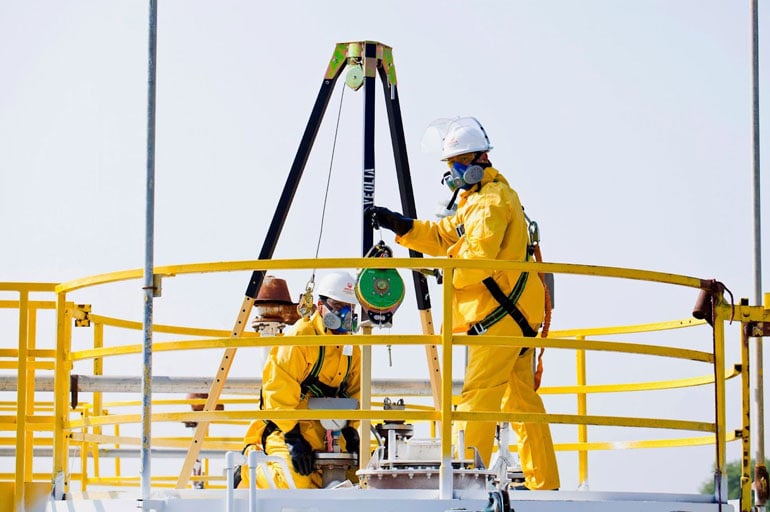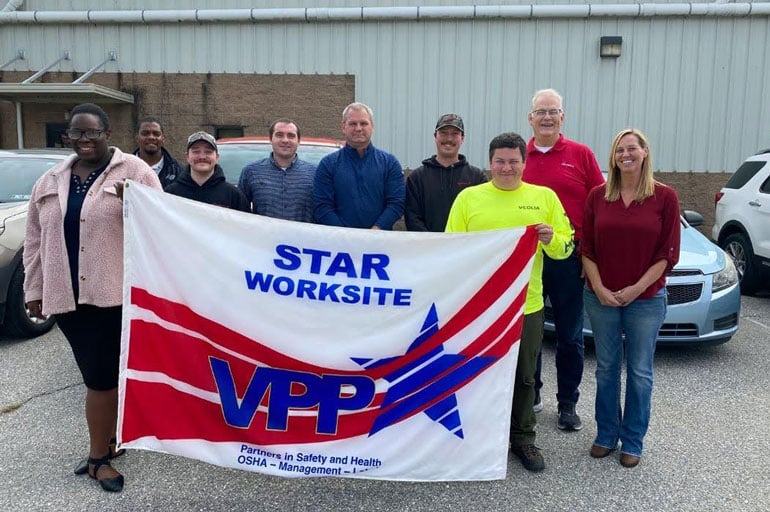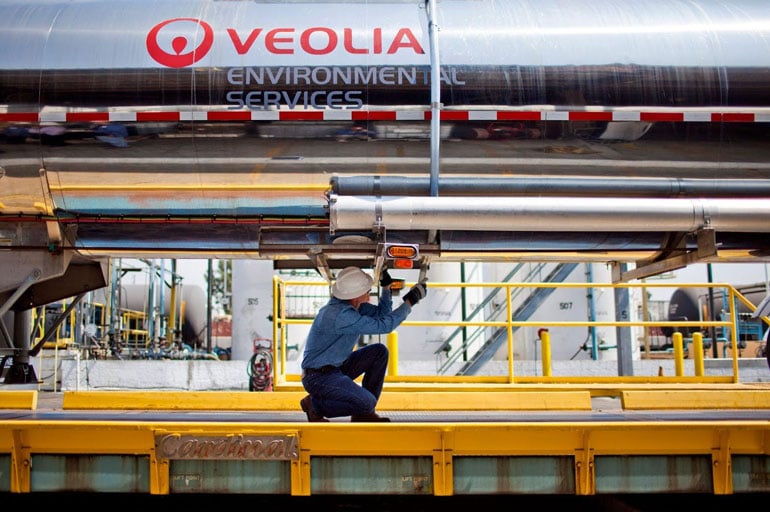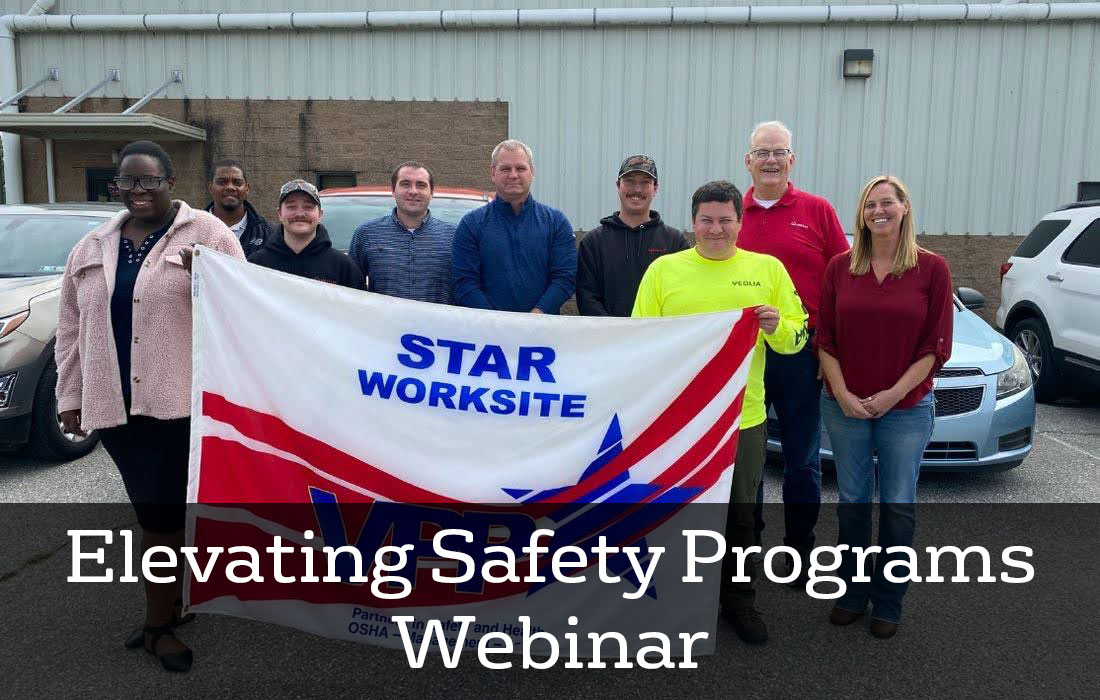Workplace safety is a major issue for companies across every industry. Failure to implement an effective safety program can lead to employee injury, drops in productivity, paying out large sums of money in workers’ comp, and potential fines for OSHA violations. Improving workplace safety requires a commitment from management, employee buy-in and acceptance, and comprehensive training.
Creating and implementing comprehensive safety procedures might seem like a daunting task, but in this article, we’re going to discuss elements of a successful safety plan and how an OSHA program, called the Voluntary Protection Program (VPP), could help guide and push you forward towards your health and safety goals.
What makes a successful safety plan?
There are four primary components of an effective workplace safety plan:
- Involvement of the site’s top management: It’s crucial that management is seen as the driving force behind safety protocols in order to achieve the buy-in from all your employees. There should be written health and safety procedures, methods for addressing issues and concerns, outlined health and safety goals and results, and clearly assigned safety and health responsibilities.
- Analyzing your worksite: Conduct a baseline hazard assessment of routine jobs and tasks, evaluate the root cause of past incidents, and document all inspections and site assessments.
- Implementing hazard prevention: You need a system of hazard correction, a written preventive maintenance program, a consistent disciplinary system, and written plans to cover emergency situations.
- Safety and health training: Leadership and employee training to recognize hazardous conditions and understand safety procedures, including assessments for comprehension.
- The overarching ideas when it comes to workplace safety is that policies need to be clear, understood by all, applicable to all, and non-negotiable. These four foundational elements are found in OSHA’s VPP.

What is VPP?
OSHA’s Voluntary Protection Programs are certification programs that recognize employers and employees who have achieved exemplary occupational safety and health. It outlines performance based criteria for workplace safety procedures and then verifies whether or not the applicant company meets them with an intensive onsite evaluation. VPP brings together managers, employees, and OSHA to cooperate and work together to combat workplace hazards and reduce injuries and illnesses.
Going through the VPP process gives you a roadmap of what’s required for an effective safety program and how it can be implemented. Even if formal certification isn’t your goal, just reviewing and following VPP criteria will help you significantly improve safety. In order to participate, employers must submit an application to OSHA and then undergo a rigorous evaluation by a team of safety and health professionals.

The problem with safety: reactive vs. proactive
The underlying issue for many companies that eventually leads to accidents or employee injury is having a reactive instead of a proactive approach to safety. They only act after an incident has occurred and often fail to implement effective training programs, establish communication procedures, and judge the success of their safety programs solely on lagging indicators.
Lagging indicators for workplace safety generally look at things like rate of injuries, illnesses, and fatalities. These indicators can tell you what went wrong, but it’s more difficult to see why things went wrong. That’s where leading indicators are useful. Examples of leading indicators include:
- Number of workers who attend a monthly safety meeting
- Number of training hours completed by employees
- The amount of time it takes management to respond to a safety hazard report
- Number of hazards identified in a given time period
Leading safety indicators measure events and activities that precede safety incidents, while lagging indicators describe outcomes that have already taken place. When it comes to being proactive and building safety procedures, leading indicators are crucial.
By moving through the VPP process and working to meet their criteria, managers and employees alike will become more proactive in their thinking.

How can VPP help your company?
Becoming a VPP participant pushes you forward to implement all the components of an effective workplace safety plan. The results and benefits of this program speak for themselves. On average, participants are:
- 53% below the Bureau of Labor Statistics (BLS) Total Case Incident Rate (TCIR) for their industries
- 57% below the BLS Days Away, Restricted and Transfer (DART) rate for their industries
- Avoided an estimated 4,035 TCIR injuries
- VPP participants have saved more than $300 million by avoiding DART injuries
- Federal Agency VPP participants saved the government more than $59 million by avoiding DART injuries
- 542 VPP sites experienced zero recordables
At the end of the day, fewer injuries and illnesses mean greater profits as workers’ compensation premiums and other costs plummet. Plus, as a certified VPP participant, you won’t receive any unannounced OSHA inspections at your site.
Participating in this program will help your company build a cooperative relationship with OSHA and instill safety and health prevention as a core value for your team.


